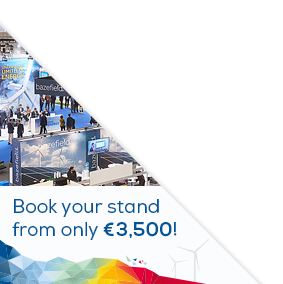Posters
Siblings:
ProceedingsProgrammeProceedingsSpeakersPostersContent PartnersElectrification StageMarkets TheatreR&I ActivitiesStudent DayProgramme Committee & abstracts reviewersPresenters dashboardCome meet the poster presenters to ask them questions and discuss their work
We would like to invite you to come and see the posters at our upcoming conference. The posters will showcase a diverse range of research topics and provide an opportunity for delegates to engage with the authors and learn more about their work. Whether you are a seasoned researcher or simply curious about the latest developments in your field, we believe that the posters will offer something of interest to everyone. So please, join us at the conference and take advantage of this opportunity to learn and engage with your peers in the academic community. We look forward to seeing you there!

PO025: Camera calibration and Ground-Truth Generation as an Entry Point of improving manufacturing Processes
Dirk Rannacher, Lead Data Scientist, Siemens Gamesa Renewable Energy
Abstract
The so-called camera calibration and the calculation of the ground truth data based on it is one essential point in our blade manufacturing project. A method derived from a pinhole camera together with an AI based detection algorithm is used in this approach. The result of the calibration is an individual camera-specific parameter set, which can be divided into intrinsic and extrinsic parameter-matrices. The intrinsic calibration can be performed offline, i.e. without mounting the camera on the shop floor, by using a specific camera calibration tool. In contrast the extrinsic calibration, i.e. the individual alignment of the camera to the world coordinate system, can only be carried out in the final position. In principle, images of special markers that are projected into the mold are recorded to determine the parameters. A key point detection algorithm based on a convolutional neural network is able to identify these dedicated markers on the images. The raw data generated in this way is then statistically validated and adjusted so that the complete system of equations can then be solved using standard libraries for camera calibration. Finally, with the help of these parameters, any blade design data can now be transferred from the 3D mold related coordinate system to a 2D image coordinate system and interpreted as a ground truth database. This data builds the translated design basis for our Optical Blade tool, which is able to compare the actual position for each layer visible on a camera image with the 3D design data from a CAD model. The methodology generally forms the basis for any further project based on a camera system especially in manufacturing areas. This product is part of the “Optical Blade” and are proudly in production since 2022. This tool was created in partnership together with IBM.







